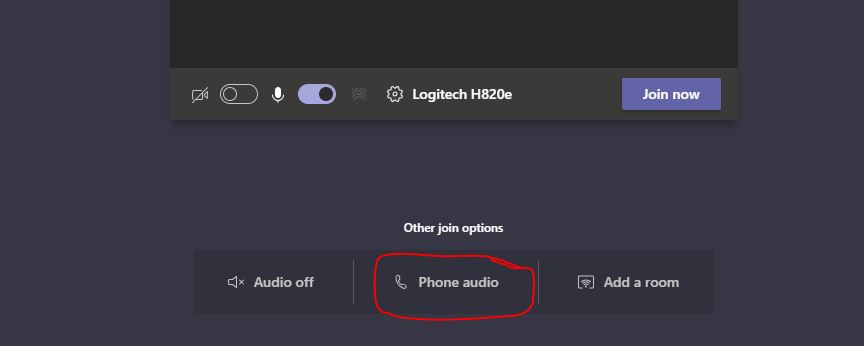The “Dial out” feature is now more popular than ever as more people are working from home. Just as a recap, following are the two most common scenarios for dial-out:

- When a user joins a teams (or SFB) meeting an option is to join the audio portion of the meeting using a PSTN phone (cell phone or home phone). In this case, the user joins the meeting using the Teams client and dials out to a cell phone (or any PSTN) for the audio. This is the “Other Join Option” that you see on the meeting join screen.
- The other scenario is, when a meeting participant invites someone by typing in the phone number in the search window, and hence, dialing out from the meeting to the phone.
The minutes used for this type of call is different than direct calling minutes. A user with domestic or ‘domestic and international’ calling plan is allocated 60 minutes per month for dial-out. Each organization has its own “call me at” minute pool that gets allocated all the combined minutes of its users, on the 1st day of calendar month. For example, if your organization has 100 users with Domestic Calling Plan and audio conferencing license, then the minute pool will have 6000 minutes on the 1st day of the month.
If all the minutes are used up then users will not be able to use the ‘call me at’ feature. This probability of running out of dial-out minutes are slim when most employees works from Office and join most meetings in person. When you have employees working mostly from home, or if you have lot of mobile employees, then this feature gets heavily used, and there is a good chance for an organization to run out of minutes.
Organizations have couple of options to increase the dial-out minutes. Note that, a tenant will get a warning as the dial-out minutes become close to completely depleting, the warning email will be sent to the administrator when 90% of the minutes are used up.
Here are two options to increase the minutes:
Solution # 1 – Communication Credit
Microsoft recommends adding Communication Credit to the user’s license. Adding communication credit means that, after running out of minutes, the rest of the month, your organization will be charged for “call me at” feature using the communication credit on a per minute basis. The rate is published calling rate for domestic or international calling plan. One thing to keep in mind is that, if you add communication credit, the user by default will have the ability to dial to international number. You will need to adopt dial-lout policy to restrict international calls.
Solution # 2 – Extended Dial-out license for US and Canada
Microsoft just released extended dial-out license that will add unlimited “dial out” minutes to the user who has this license. This license is $4 per user. The unlimited dial-out countries are US and Canada only.
https://docs.microsoft.com/en-us/MicrosoftTeams/dial-out-minutes-canada-us
Which option is better ?
I would recommend utilizing the PSTN report to determine the total number of minutes used for dial out. Assuming you are already using communication credit, you can pull the monthly report to validate the usage.
For example, you have 1000 users in your organization. But your monthly bill for dial-out is $2000. That means, if you give each of your user this license, from cost perspective you are incurring extra $2000 per month. If you have a small organization of 100 users and your monthly cost for dial-out is $1000, then, it will be beneficial to use the extended license instead of communication credit.
Another option, is to mix things up. From your PSTN report, you can identify, who are top users of communication credit, and then, assign them the extended dial-out license. From PSTN report, you will be able to figure out how much additional cost a particular user is incurring due to dial-out. Based on that, you can decide who gets this license. Note that, when dial-out is done from a meeting the additional cost is reflected for that meeting organizer in the PSTN report.
Based on the latest (10/1/2020) rates the calls to US pay-per-minute rate is 3c for regular number and 1.3c for toll free.



